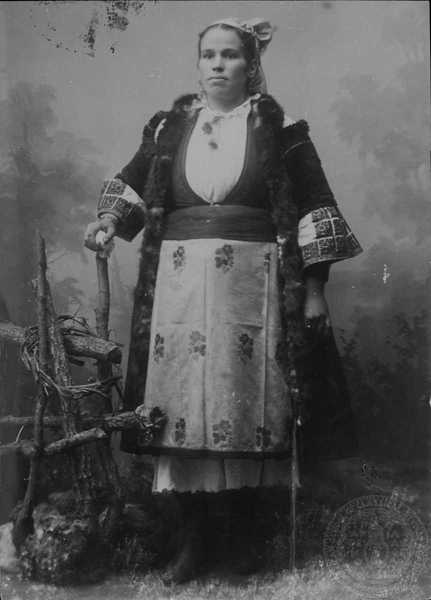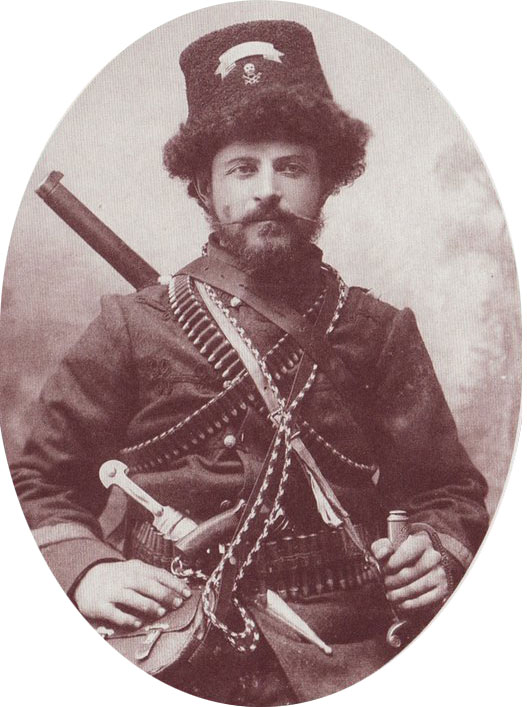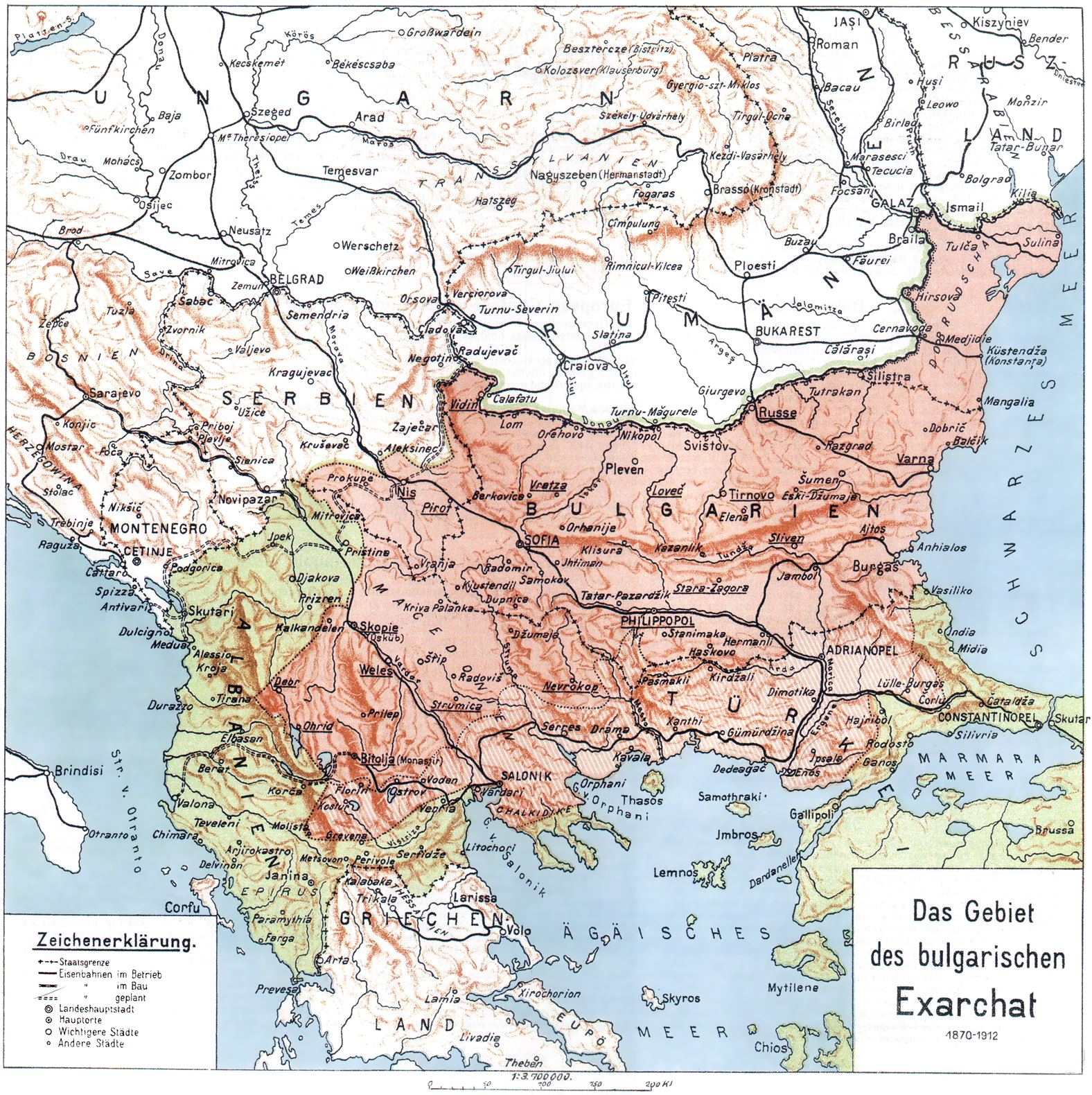|
Dolno Orizari, Bitola
Dolno Orizari (Macedonian Cyrillic: Долно Оризари) is a village from Bitola, the second-largest city in North Macedonia. According to the 2002 census, the total population is 1834. Geography and location At an altitude of 577 meters, the village is in Pelagonia, in the center of the Bitola valley, close to the city of Bitola, in the northern part of the territory of the Municipality of Bitola. Its neighbouring villages are Gorno Orizari, Karamani, and Logovardi. History The village is fairly new. According to the legend, it was established at the end of the 19th century. During this time, Dolno Orizari was under the Manastir Vilayet of the Ottoman Empire. According to the statistics of Vasil Kanchov ("Macedonia. Ethnography and Statistics") in 1900 Dolno Orizari had 440 inhabitants, all Bulgarians. According to the secretary of the Bulgarian Exarchate Dimitar Mishev's study ("La Macedoine et sa Population Chrétienne") in 1905 in Dolno Orizari lived 216 ... [...More Info...] [...Related Items...] OR: [Wikipedia] [Google] [Baidu] |
Malo Konjari
Malo Konjari is a village in Municipality of Prilep, North Macedonia. The village has a sports airfield build whilst the village was part of Yugoslavia. Demographics According to the 2002 census, the village had a total of 727 inhabitants. Ethnic groups in the village include:Macedonian Census (2002) ''Book 5 - Total population according to the Ethnic Affiliation, Mother Tongue and Religion'' The State Statistical Office, Skopje, 2002, p. 155. * Macedonians 723 * Serbs 2 *Others 2 Sports Local football club FK Mlekar plays in the OFS Prilep Division B. References Villages in Prilep Municipality {{Prilep-geo-stub ... [...More Info...] [...Related Items...] OR: [Wikipedia] [Google] [Baidu] |
Prilep Municipality
Prilep ( mk, Прилеп ) is a municipality in the south of North Macedonia. ''Prilep'' is also the name of the city where the municipal seat is found. It is located in the Pelagonia Statistical Region. Geography The municipality borders Čaška and Dolneni municipalities to the north, Kavadarci Municipality to the east, Krivogaštani, Mogila and Novaci municipalities to the west, and Greece to the south. The municipality spreads over the northeastern part of the Pelagonia valley, it takes contains much of the Mariovo Mariovo ( mk, Мариово) is a historic region in the southern part of North Macedonia, with an area of 1,390 square km and an elevation 1,050 m, situated among mountains. Geography Mountains * Selečka (highest peak - ''Visoka'' 1,471 m) ... region. Demographics The population of the municipality is 69,025. According to the last national Macedonian census from 2021 the majority in the municipality is represented by the ethnic Macedonians. Inh ... [...More Info...] [...Related Items...] OR: [Wikipedia] [Google] [Baidu] |
Prespa
Prespa ( mk, Преспа, sq, Prespa, el, Πρέσπα) is a region shared between North Macedonia, Albania and Greece. It shares the same name with the two Prespa lakes which are situated in the middle of the region. The largest town is Resen in North Macedonia with 9,000 inhabitants. History In today's borders, the region is divided between three countries, which is result of the division of the Ottoman territories of Europe after the two Balkan Wars. Prespa itself has an important geostrategic position. During the Roman rule through Prespa, the famous ancient Roman road "Via Egnatia" was built. In addition to road, several settlements were also built. In the 6th and 7th centuries in Prespa didn't settle permanently Slavic tribes. The Slavs skipped the region that had been already plundered and depopulated, but continued south to the Mediterranean coast. In the late 10th and early 11th centuries, during the reign of the Cometopuls, besides Prespa Lake was mentioned also ... [...More Info...] [...Related Items...] OR: [Wikipedia] [Google] [Baidu] |
Klepač, North Macedonia
Klepač is a village in Municipality of Prilep, North Macedonia. It used to be part of the former municipality of Topolčani. Geography The village is located in Pelagonia, in the extreme southern part of the Prilep Field and in the southern part of the territory of the Municipality of Prilep. The village is flat, at an altitude of 590 meters.Panov, Mitko (1998). Encyclopedia of the villages in the Republic of Macedonia. Skopje. p. 150 The village is located in the southern part of the Prilep Field, 22 kilometers south of Prilep. It covers an area of 4.2 km2. It is dominated by arable land on an area of 366 hectares, with the forests accounting for 17 hectares and pastures - 16 hectares. History In the 19th century, Klepač was a village in the Prilep kaza of the Ottoman Empire. On May 15, 1906, Velko voivode's cheta, which consisted of 9 people, was surrounded by the Ottoman army in the village and all of them were killed. A memorial plaque was placed in the villag ... [...More Info...] [...Related Items...] OR: [Wikipedia] [Google] [Baidu] |
Macedonian Orthodox Church – Ohrid Archbishopric
The Macedonian Orthodox Church – Archdiocese of Ohrid (MOC-AO; mk, Македонска православна црква – Охридска архиепископија), or simply the Macedonian Orthodox Church (MOC) or the Archdiocese of Ohrid (AO), is an autocephalous Eastern Orthodox church in North Macedonia. The Macedonian Orthodox Church claims ecclesiastical jurisdiction over North Macedonia, and is also represented in the Macedonian diaspora. The primate of the Macedonian Orthodox Church is Stefan Veljanovski, the Metropolitan of Skopje and Archbishop of Ohrid and Macedonia. In 1959, the Holy Synod of the Serbian Orthodox Church granted autonomy to the Macedonian Orthodox Church in the then-Socialist Republic of Macedonia, as the restoration of the historic Archbishopric of Ohrid; the MOC was united with the Serbian Orthodox Church (SOC) as a part of the SOC. In 1967, on the bicentennial anniversary of the abolition of the Archbishopric of Ohrid, the Maced ... [...More Info...] [...Related Items...] OR: [Wikipedia] [Google] [Baidu] |
Aromanians In North Macedonia
The Aromanians in North Macedonia ( rup, Armãnji, mk, Аромани, ''Aromani''), also known as Vlachs ( rup, Vlahi, mk, Власи, ''Vlasi''), are an officially recognised minority group numbering some 9,695 people according to the 2002 census. They are concentrated in Kruševo, Štip, Bitola and Skopje. They are referred to as Vlachs by the Macedonian authorities and society. Ethnonyms The Aromanian population in North Macedonia are commonly known as ''Vlachs'' (Власи, ''Vlasi'') or ''Tsintsars'' (Цинцари, ''Cincari''), and have historically been called "Macedo-Romanians". History The Aromanians are a unique ethno-linguistic group, having their own culture and language, who have existed for over two thousand years in the Balkan peninsula.Parliamentary Assembly Council of Europe. RECOMMENDATION 1333. 1997 Retrieved on 4 Jul 2008 They were for centuries considered a traditional mountain people and soon the word Vlach became synonymous with animal-husbandry an ... [...More Info...] [...Related Items...] OR: [Wikipedia] [Google] [Baidu] |
Romani People
The Romani (also spelled Romany or Rromani , ), colloquially known as the Roma, are an Indo-Aryan ethnic group, traditionally nomadic itinerants. They live in Europe and Anatolia, and have diaspora populations located worldwide, with significant concentrations in the Americas. In the English language, the Romani people are widely known by the exonym Gypsies (or Gipsies), which is considered pejorative by many Romani people due to its connotations of illegality and irregularity as well as its historical use as a racial slur. For versions (some of which are cognates) of the word in many other languages (e.g., , , it, zingaro, , and ) this perception is either very small or non-existent. At the first World Romani Congress in 1971, its attendees unanimously voted to reject the use of all exonyms for the Romani people, including ''Gypsy'', due to their aforementioned negative and stereotypical connotations. Linguistic and genetic evidence suggests that the Roma originated ... [...More Info...] [...Related Items...] OR: [Wikipedia] [Google] [Baidu] |
Macedonians (ethnic Group)
Macedonians ( mk, Македонци, Makedonci) are a nation and a South Slavs, South Slavic ethnic group native to the region of Macedonia (region), Macedonia in Southeast Europe. They speak Macedonian language, Macedonian, a South Slavic language. The large majority of Macedonians identify as Eastern Orthodox Christians, who speak a South Slavic language, and share a cultural and historical "Orthodox Byzantine–Slavic heritage" with their neighbours. About two-thirds of all ethnic Macedonians live in North Macedonia and there are also Macedonian diaspora, communities in a number of other countries. The concept of a Macedonian ethnicity, distinct from their Orthodox Balkan neighbours, is seen to be a comparatively newly emergent one. The earliest manifestations of an incipient Macedonian identity emerged during the second half of the 19th century among limited circles of Slavic-speaking intellectuals, predominantly outside the region of Macedonia. They arose after the Firs ... [...More Info...] [...Related Items...] OR: [Wikipedia] [Google] [Baidu] |
Bulgarian Exarchists
Bulgarian Millet ( tr, Bulgar Milleti) was an ethno-religious and linguistic community within the Ottoman Empire from the mid-19th to early 20th century. The semi-official term ''Bulgarian millet'', was used by the Sultan for the first time in 1847, and was his tacit consent to a more ethno-linguistic definition of the Bulgarians as a nation. Officially as a separate Millet in 1860 were recognized the Bulgarian Uniates, and then in 1870 the Bulgarian Orthodox Christians (''Eksarhhâne-i Millet i Bulgar''). At that time the classical Ottoman Millet-system began to degrade with the continuous identification of the religious creed with ethnic identity and the term ''millet'' was used as a synonym of ''nation''. In this way, in the struggle for recognition of a separate Church, the modern Bulgarian nation was created. The establishment of the Bulgarian Exarchate in 1870, meant in practice official recognition of a separate Bulgarian nationality, and in this case the religious affi ... [...More Info...] [...Related Items...] OR: [Wikipedia] [Google] [Baidu] |
Dimitar Mishev
Dimitar ( bg, Димитър; Macedonian: Димитар) is a South Slavic masculine given name. It is widely found in Bulgaria and North Macedonia. Dimitar is derived from Saint Demetrius (280–306), alternate form of Demetrius. Containing the Proto Indo-European language ''mater'' "mother", it is rooted in the Greek goddess Earth mother Demeter. The most common short for Dimitar is Mitko, while people with the name Dimitar are informally called also Mite, Mito, Dimo, Dimi, Dimcho, Dimko, Dimka, Dime. * Dimitar Agura (1849–1911), Bulgarian historian, professor of history at Sofia University and rector of the university * Dimitar Andonovski (born 1985), Ethnic Macedonian singer *Dimitar Avramovski–Pandilov (1899–1963), ethnic Macedonian painter * Dimitar Berbatov (born 1981), Bulgarian footballer *Dimitar Blagoev (1856–1924), Bulgarian political leader, the founder of Bulgarian socialism *Dimitar Bosnov (born 1933), defender for PFC Cherno More Varna from 1955 to 1970 * ... [...More Info...] [...Related Items...] OR: [Wikipedia] [Google] [Baidu] |

.jpg)


